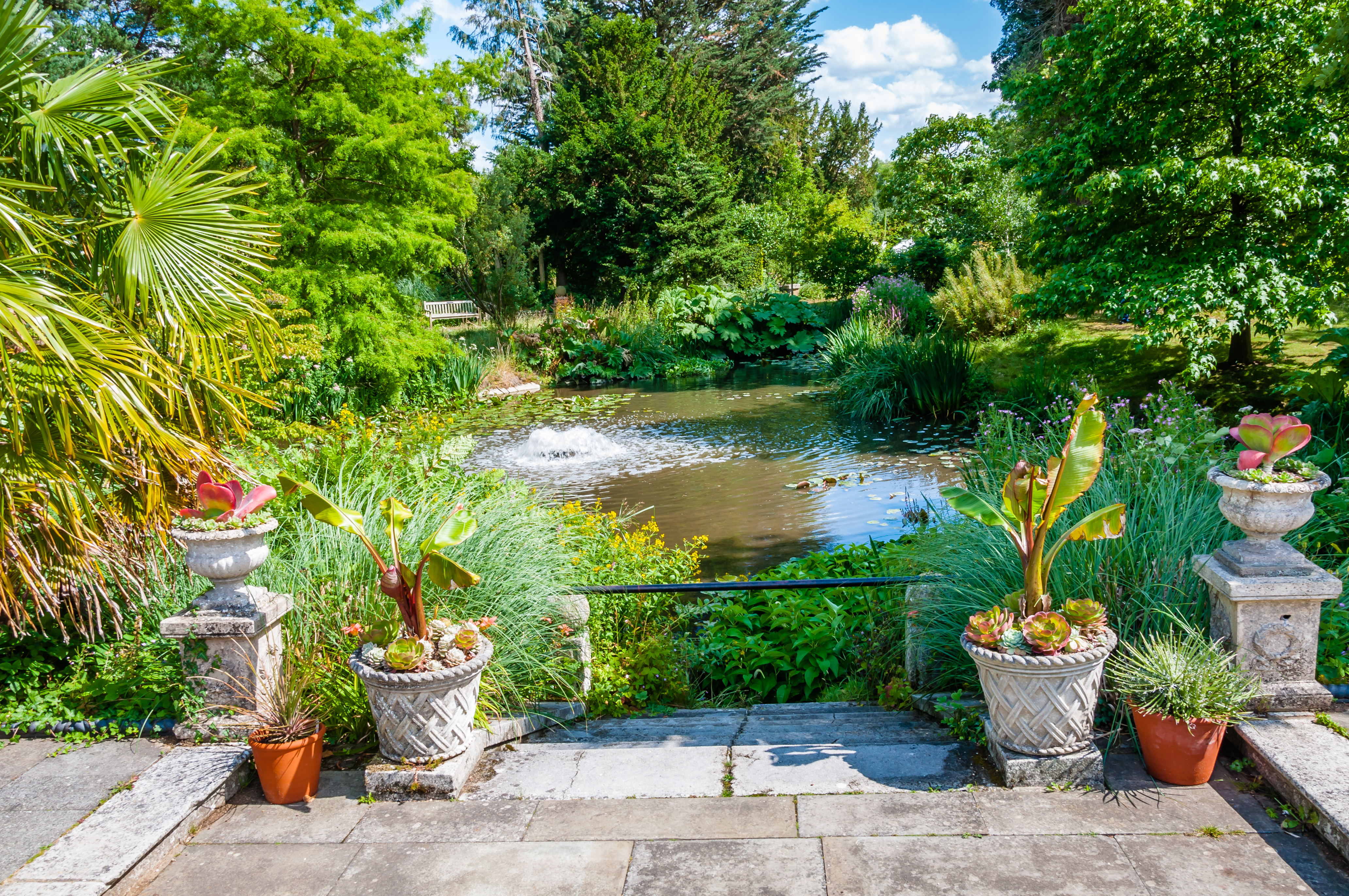Myddleton House: The place that 'will help you learn what true gardening is' is open to everyone, and just 30 minutes from central London
E. A. Bowles created a horticultural playground in the gardens of Myddleton House that was years ahead of its time, and continues to influence even today. Isabel Bannerman takes a look.


It being the season for the painted purple perennial wallflower Erysimum ‘Bowles’s Mauve’ and irises, I have been looking into the world of E. A. Bowles. Imagine, if you will, a horticultural Howards End set in Enfield, north London, famous for rifles and motorbikes. This secure, golden place was hearth and home of the Bowles family at Myddelton House, EN2: settled successfully there, in business, for some 250 years before the birth of Edward Augustus in 1865.
A benign oligarchy, five children, mother cheerfully rotund, describing herself as ‘bouncing’ round the house and, unconventionally, cooking in the morning room as a pastime. Well-equipped nurseries inside and out catered for children and plants and a pavilion in the garden served as a billiards and smoking room that young Augustus turned into his museum of natural history.

Purple patch: wallflower Erysimum ‘Bowles’s Mauve’ is a springtime reminder of the great E. A. Bowles.
Educated at home with his younger sister Medora, Bowles lost the sight of one eye aged eight, spending a year in a darkened room learning to play the piano by ear. He lost the other eye in his dotage. He was always able, nevertheless, to identify plants by the smell of their leaves, trained since the invention with his sister of ‘The Smelling Game’, in which each tested the other’s ability to recognise, without looking, anything, gooseberry skins or worse.
Medora and a brother died of tuberculosis in their twenties. Disabilities and prolonged childhood illness can nurture miraculous powers of perception and positivity; my researches into smell have led me time and time again to remarkable blind people; to Helen Keller who could smell a storm approaching and described the smell of young men as ‘elemental as of fire, storm, salt sea’; and to Bowles, who broke the buttoned-up bonds of conventional garden writing with such expression as ‘the smell of phlox is both peppery and pigsty’. It is endearing to find an Edwardian who wrote that smell makes ‘life worth living’. Bowles’s writing is based on observation of the ordinary and it hugely influenced later and more familiar garden writers, such as Vita Sackville-West.
"He was able to identify plants by the smell of their leaves"
Suggestions such as to plant a Daphne odora in a ‘place by your back door where the cat lies, and the flies gather’ were not commonplace before the mid 20th century. But Bowles was also productive in his doings and, once he had chosen, after reading Theology at Cambridge, to concentrate on botany and botanical illustration, he got involved in the RHS, which, in the late 1880s, comprised a relatively small, new coterie of like-minded men (and a scattering of women) pressing the cause of gardening everywhere.
By the early 1900s, Bowles was a mover and shaker. He published his first book, My Garden In Spring, in 1914 just as the First World War brought huge changes to society. Cash and labour being short in its aftermath, gardening was in crisis and the kind of gardening we all aspire to now evolved of necessity. Country Life blossomed. Growing suburbs and a burgeoning middle class meant that gardening was already being democratised and transformed. Such great gardens as Sissinghurst in Kent, Hidcote and Kiftsgate in Gloucestershire, Great Dixter in East Sussex, Somerset’s East Lambrook and the smaller, but increasingly famous gardens of Charleston, East Sussex, and Benton End, Suffolk, are all the products of the interwar period, albeit serviced by considerable private wealth.

Myddleton House Gardens
Bowles, being an affable and effective man, was vice president of the RHS at this time, from 1926 until his death in 1954. He was an expert at smoothing ruffled feathers: when a fracas broke out at the RHS—due to Reginald Farrer’s explosive introduction to Bowles’s book, describing avaricious Edwardian collectors as ‘out to purchase the glories of the Alps at so much a yard’ — a direct reference to RHS bigwig Sir Frank Crisp — Bowles calmed the whole thing by inviting the injured parties to the Tulip Tea held on his birthday in May.
Exquisite houses, the beauty of Nature, and how to get the most from your life, straight to your inbox.
Described by a colleague as ‘hugely entertaining in a category of his own’, nothing but warmth and wonder seems to emanate from him. His writing is immediate, never pompous, often admitting to laziness, which is hard to believe because he achieved much. Mentoring and talent spotting in the local community was a passion throughout his life. He engineered that the young and underprivileged received training using his estate.
This education and freedom continue. The garden is part of Lee Valley Park in public ownership and subject of a lottery-funded restoration. We should go. As furious Farrer also wrote in his foreword: ‘Come into Mr Bowles’s garden and learn what true gardening is.’
Isabel Bannerman is, along with her husband Julian, one of Britain's most renowned garden designers, with over 40 years of experience. The couple were granted the Royal Warrant of His Majesty King Charles III in 2024. Isabel's latest book, A Wilderness of Sweets: Making Gardens with Scented Plants, was published by Pimpernel Press earlier this year. You can see more of Isabel and Julian's work at bannermandesign.com.
